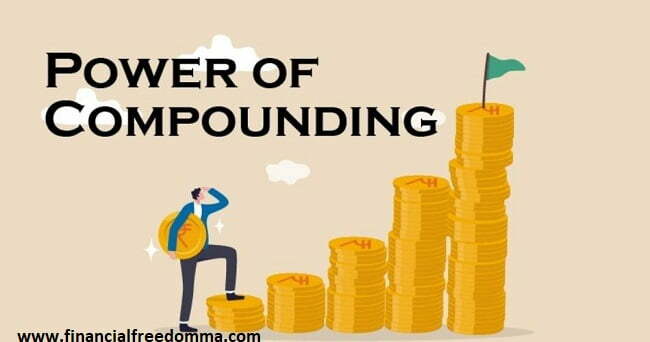What is the magic of compounding?, What is power of compounding .? What is the secret of compounding? power of compounding in investment. The Early Bird Advantage, Making Your Money Work. Compounding demands patience
Have you ever marveled at how a tiny seed can grow into a majestic tree? Nature has its way of demonstrating the remarkable principle of compounding, and this principle extends far beyond the realm of botany. In the world of finance and investments, the power of compounding is a force to be reckoned with. It’s a concept that has turned small investments into substantial fortunes and is the cornerstone of long-term financial success. So, let’s delve into the captivating world of compounding and unveil its magic step by step.

Understanding the Foundation: What is Compounding?
At its core, compounding is the process of generating earnings from both the initial investment and the accumulated profits over time. In simpler terms, it’s the snowball effect of earnings on top of earnings. Imagine your money as a snowball rolling down a hill, gathering more snow as it goes – that’s compounding in action.
The Early Bird Advantage: Start Now, Reap Later
The true power of compounding reveals itself when you start early. Let’s compare two hypothetical investors, Jane and Mike. Jane begins investing $1,000 a year at age 25, while Mike starts at age 35. Even if they both invest the same amount annually and earn the same interest rate, Jane will have significantly more money at retirement. Why? Because her money has had more time to compound.
Harnessing the Rate of Return: Making Your Money Work
The rate of return, or the interest you earn on your investments, plays a pivotal role in compounding. A higher rate of return can supercharge your earnings over time. Small differences in the rate of return can lead to substantial variations in the final outcome. This is why understanding different investment options and their potential returns is crucial.
The Snowball Effect: Watching Your Wealth Grow

As your investments generate earnings, those earnings themselves start generating additional earnings. This compounding cycle continues to accelerate, and the growth curve becomes steeper as time goes on. It’s like a snowball rolling down a hill – the larger it becomes, the faster it grows.
Practical Example: Compounding in Action
Let’s break down a real-life scenario. Imagine you invest $5,000 annually with an average annual return of 7%. After 30 years, your initial investment of $150,000 would have grown to over $380,000. The beauty here lies not just in the $230,000 in earned interest but in the fact that a significant portion of that interest is due to the compounding effect.
Overcoming Common Roadblocks to Compounding
While compounding is a powerful tool, it’s not immune to challenges. Inflation and taxes can erode the value of your earnings over time. To combat this, it’s essential to consider tax-efficient investment strategies and assets that outpace inflation.
Patience is Key: The Long Game of Compounding
In a world of instant gratification, compounding demands patience. The most substantial rewards often come to those who stay committed to the process for the long haul. Resist the temptation to constantly tinker with your investments, and let time work its magic.
Starting Small: Every Bit Counts
You don’t need to have a large sum of money to benefit from compounding. Starting small and consistently adding to your investments can lead to significant growth over time. The key is consistency and discipline.
The Compounding Conclusion: A Wealth-Building Marvel
In summary, the power of compounding is a remarkable force that can turn modest investments into substantial wealth. By understanding the principles of compounding, harnessing the rate of return, and staying committed for the long term, you can set yourself up for financial success. Just like the seed that grows into a towering tree, your investments have the potential to flourish beyond your expectations.
FAQs about Compounding
Q1: Is compounding only applicable to investments?
Ans: Compounding is a universal concept that applies to various areas, including finance, science, and nature. In investments, it refers to the process of earning returns on both the initial investment and accumulated earnings.
Q2: Can I experience the benefits of compounding with a savings account?
Ans: While a savings account offers some compounding, the growth is generally slow due to lower interest rates. Investing in assets with higher potential returns can amplify the power of compounding.
Q3: How do I choose the right investments for compounding?
Ans : Select investments based on your financial goals, risk tolerance, and time horizon. Consult with a financial advisor to create a diversified portfolio that aligns with your objectives.
Q4: Can I start compounding later in life and still benefit?
Ans : Starting later means you have less time for your investments to compound, but it’s never too late to begin. The key is to maximize your contributions and seek higher returns to make the most of the time you have.
Q5: What role does reinvesting play in compounding?
Ans : Reinvesting your earnings allows you to take full advantage of compounding. Instead of withdrawing profits, leave them invested to generate even more earnings over time.
